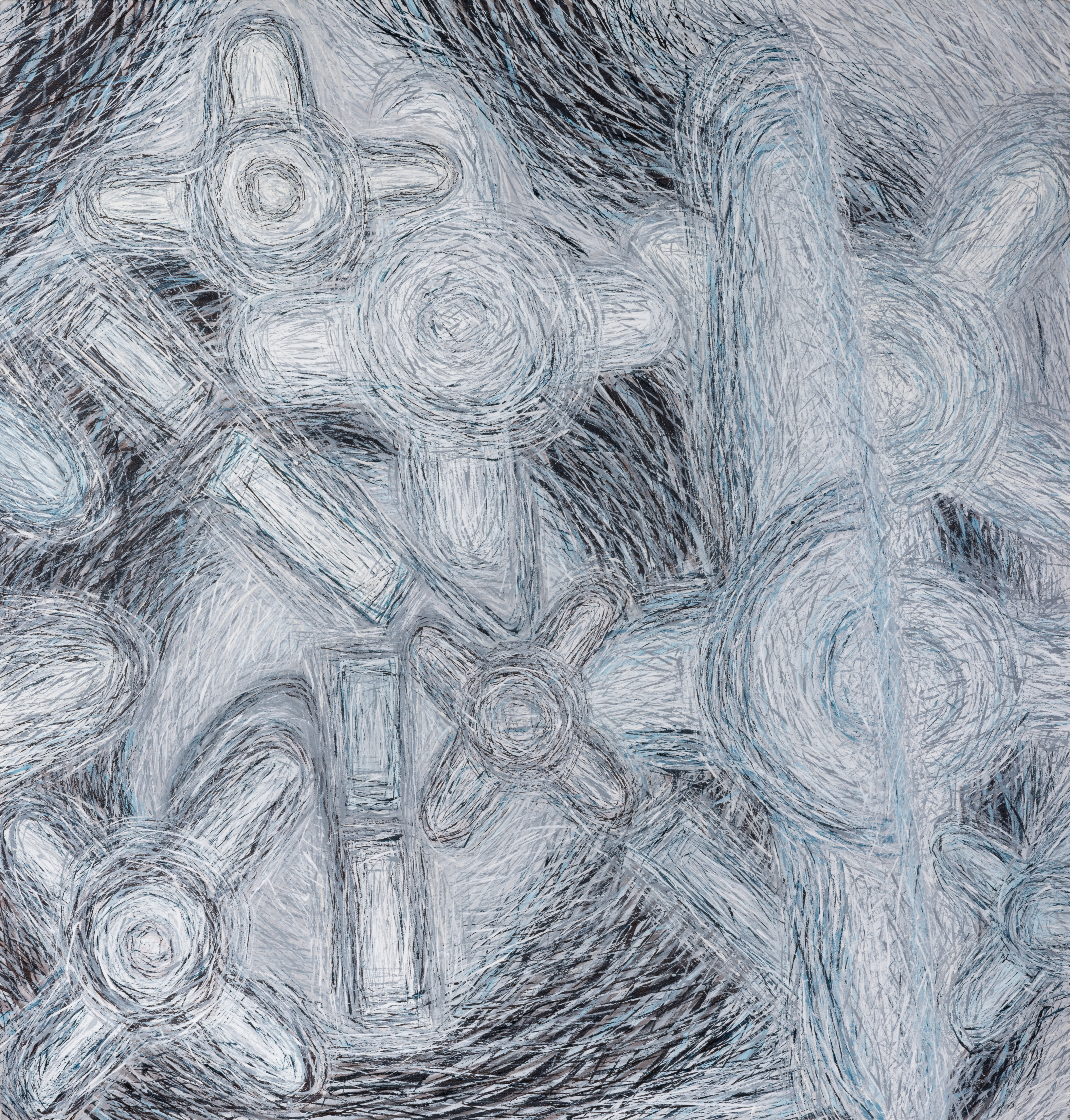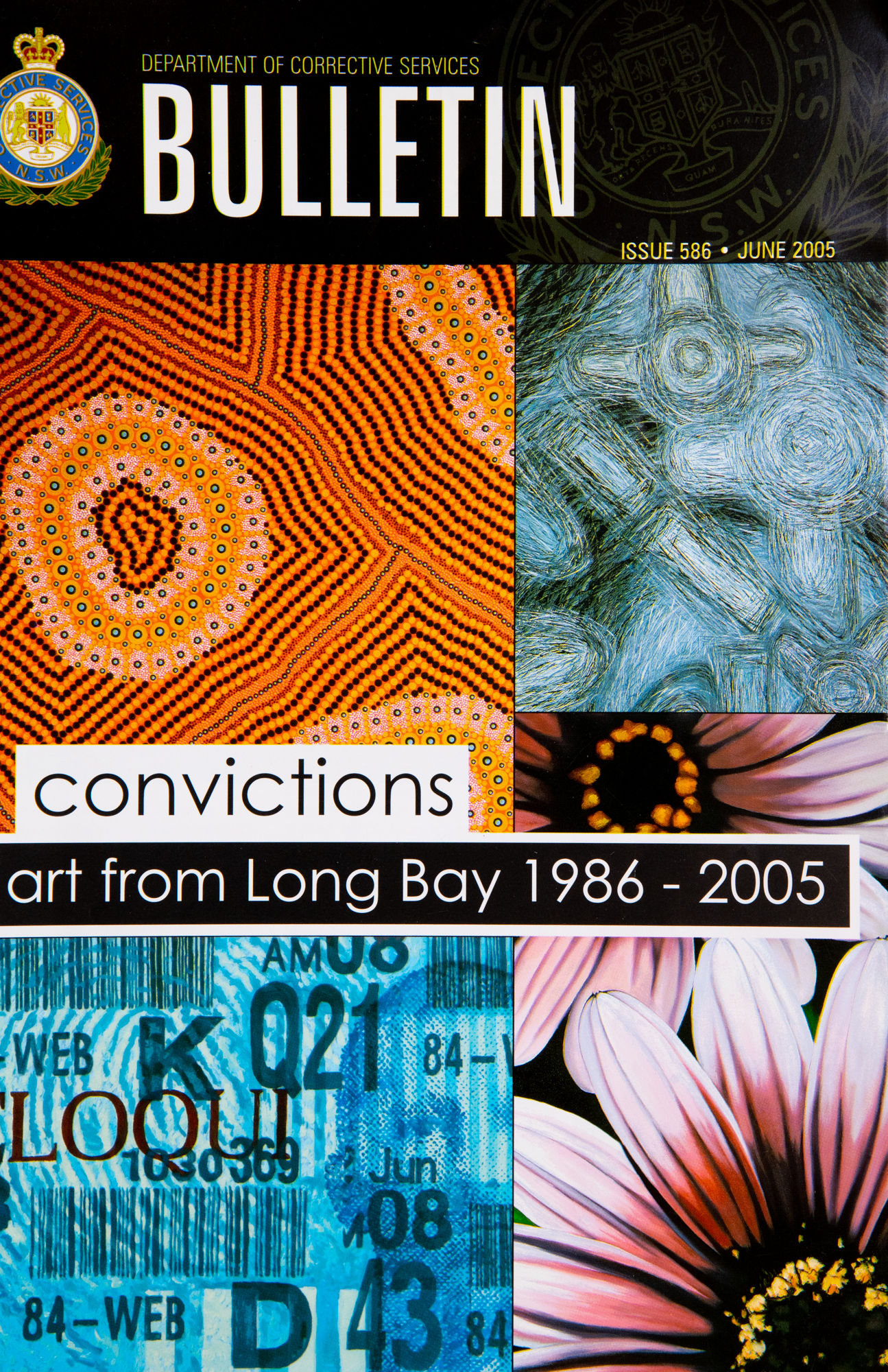Automatic language translation
Our website uses an automatic service to translate our content into different languages. These translations should be used as a guide only. See our Accessibility page for further information.
Justin is one of several inmates whose artworks have been purchased by the Department of Corrective Services.

The well-trodden path
Acrylic on canvas, 2004
Justin Watkins’ The well-trodden path was created in response to a challenge: he was asked to consider how to visually depict the prison environment without all the common references to bars, cells, and other obvious signifiers.
Justin’s concept was to represent the prison layout from an aerial perspective. There are four two-storey cell wings that radiate from a central circular area. Justin also included two of the adjacent long rectangular buildings, one of which was the art studio.
At the time of planning in 1898 the prison design was considered by some to provide good surveillance of inmates. It is based on the galleried Pentonville model, radiating out towards the corners of a square-shaped compound.
Justin creates a sense of movement and energy in the work. Forms are repeated with differing scale and positions. Short sharp brushstrokes are densely layered in and around the forms. The brushstrokes represent the daily movement of inmates to and from the wings, around the circle, the art studio, and other areas of the prison.
Influenced by his background in the music industry, Justin’s painting signifies the rhythm, beat and repetition of his daily prison routine.

The well-trodden path was exhibited in a Long Bay retrospective art exhibition, Convictions, in 2005. Justin’s painting is reproduced on the covers of the NSW Department of Corrective Services Annual Report 2004/2005 and the Department’s Bulletin, Issue 586, June 2005.
Last updated:
We acknowledge Aboriginal people as the First Nations Peoples of NSW and pay our respects to Elders past, present, and future.
Informed by lessons of the past, Department of Communities and Justice is improving how we work with Aboriginal people and communities. We listen and learn from the knowledge, strength and resilience of Stolen Generations Survivors, Aboriginal Elders and Aboriginal communities.
You can access our apology to the Stolen Generations.